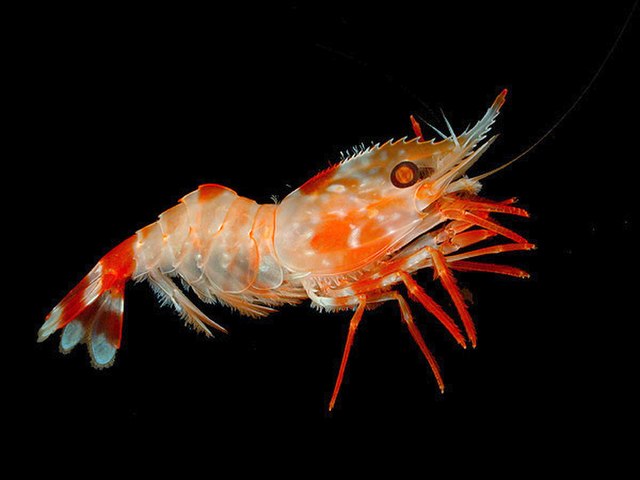The Caridea, commonly known as caridean shrimp or true shrimp, from the Greek word καρίς, καρίδος, are an infraorder of shrimp within the order Decapoda. This infraorder contains all species of true shrimp. They are found widely around the world in both fresh and salt water. Many other animals with similar names – such as the mud shrimp of Axiidea and the boxer shrimp of Stenopodidea – are not true shrimp, but many have evolved features similar to true shrimp.
Caridea
Carideans, such as Pandalus borealis, typically have two pairs of claws, and the second segment of the abdomen overlaps the segments on either side. The abdomen shows a pronounced caridean bend.
Dendrobranchiata, such as Penaeus monodon, typically have three pairs of claws, and even-sized segments on the abdomen. There is no pronounced bend in the abdomen.
Image: Lysmata amboinensis in Tropicarium Oceanarium Budapest
A shrimp is a crustacean with an elongated body and a primarily swimming mode of locomotion – typically belonging to the Caridea or Dendrobranchiata of the order Decapoda, although some crustaceans outside of this order are also referred to as "shrimp".
The shrimp Palaemon serratus of the infraorder Caridea
The Shrimp Girl by William Hogarth, circa 1740–1745, balances on her head a large basket of shrimp and mussels, which she is selling on the streets of London
Double-rigged shrimp trawler with one net up and the other being brought aboard
Traditional shrimper with a shrimp net








